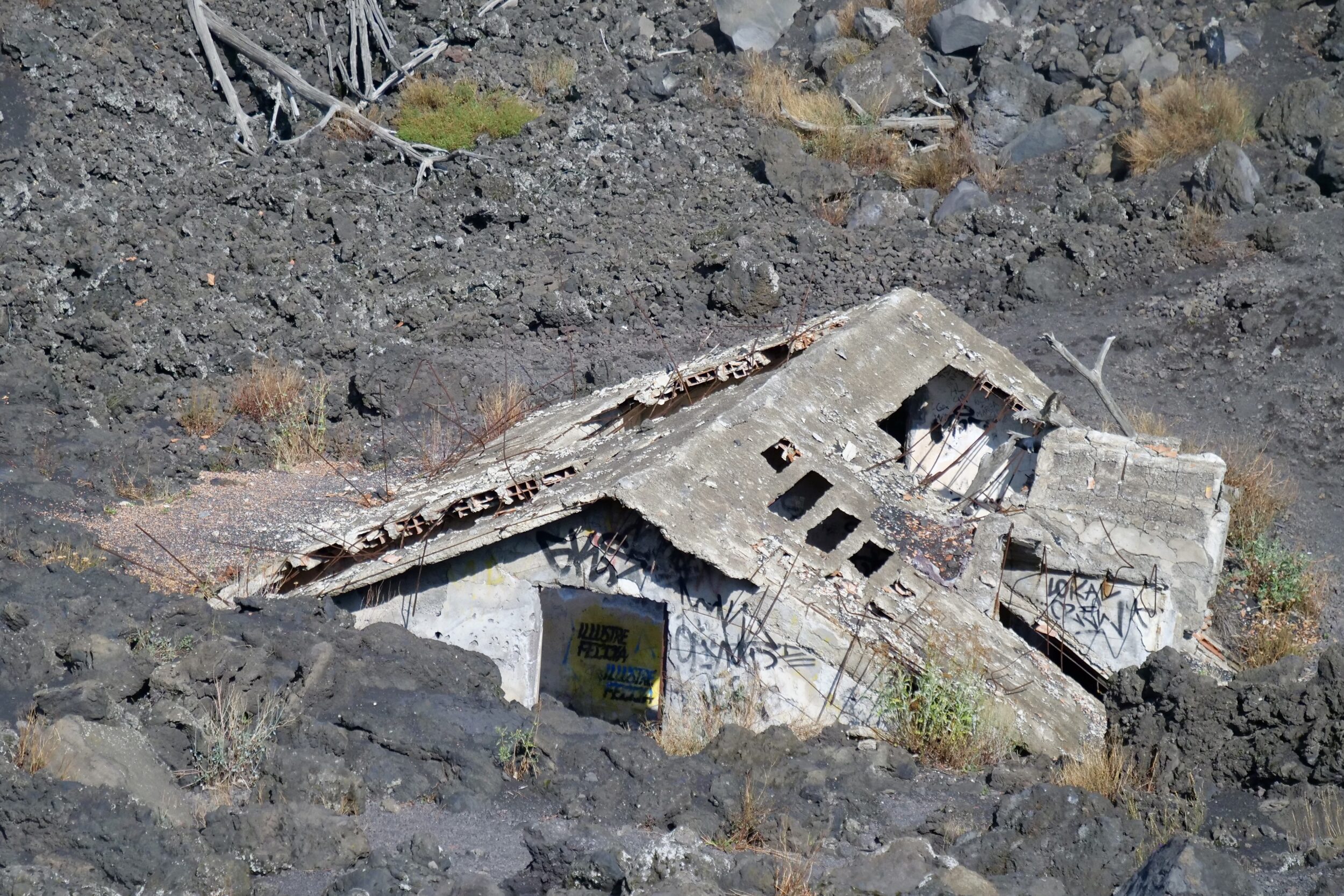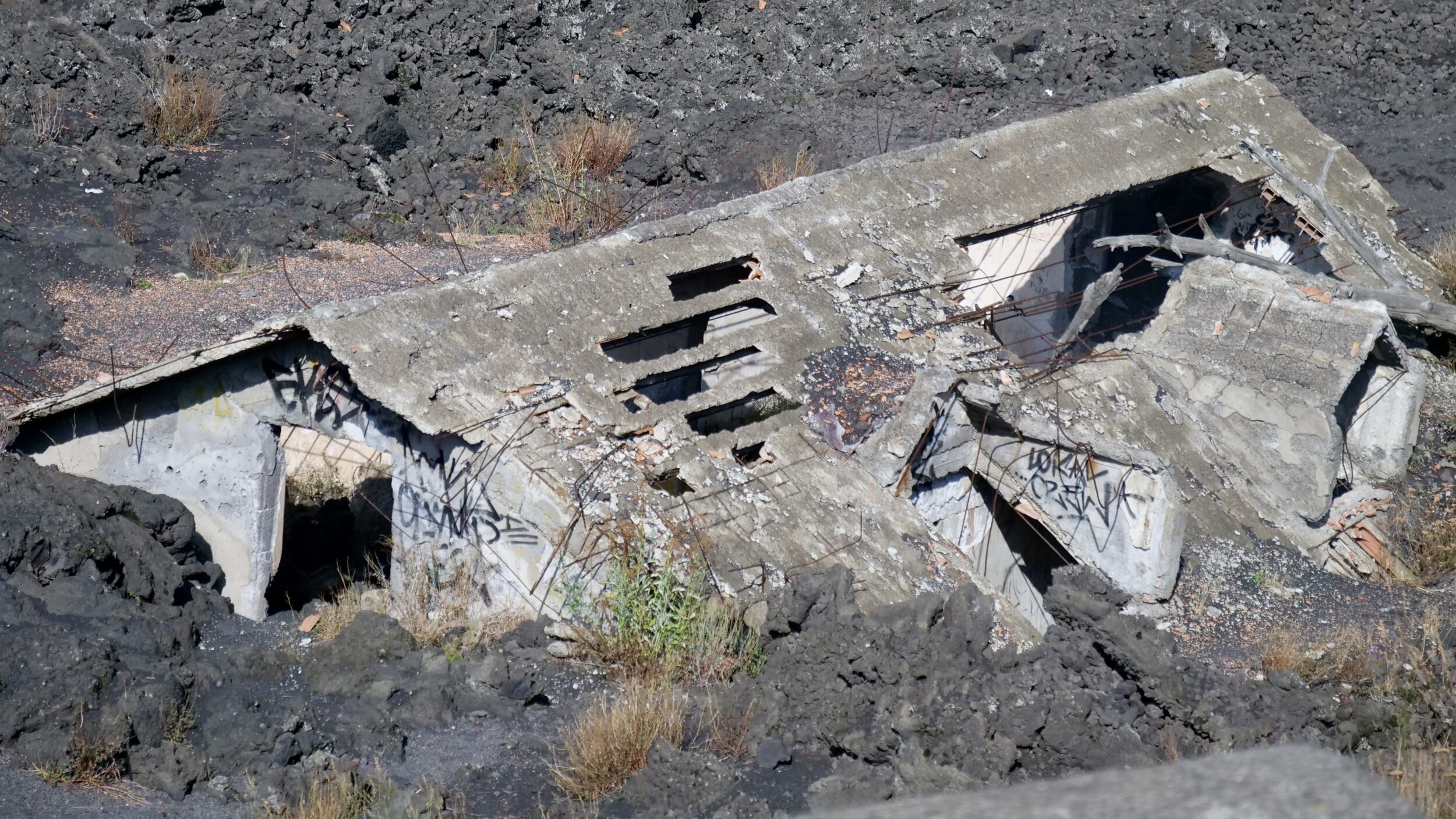This post’s photos were taken just moments after the previous one’s; the very same lava flow was the relevant “destroyer”.
Both images show the same structure, in which humans had lived.
Q1: how many people died as a result of that lava flow?
Q2: how many humans has Europe’s biggest currently-active volcano directly killed during “recorded history”?
(I.e. since circa 1500 BC – a little more than 3, 500 years ago. Etna was already active for circa half a million years before humans began to “monitor” it)

A1: none.
A2: it is impossible to deliver an incontrovertible, precise number.
However, according to this reputable source:
there have been 77 confirmed deaths that can be directly attributed to eruptions of Etna.
60 of those 77 were forest workers who died in one event, in 1843.
Vesuvius merits its reputation as a “killer volcano”; its 79 AD eruption – the one that buried Pompeii and Herculaneum – killed thousands…perhaps, as many as 16, 000 people.
Etna, however, is not (or not yet?) a “killer volcano”.
Sources which claim that Etna has claimed thousands of lives, and that it laid waste to Catania in the 17th century, are more “hysterical” than “historical”…and/or confused.
In 1693 an earthquake (and associated tsunamis) did kill thousands of people and did destroy or damage a deal of Catania.
There is, however, no evidence whatsoever to support the notion that Etna caused that quake.
It is probably true that the very same (shifting) tectonic plates were “parents” to both the big volcano and the catastrophic earthquake, but in no way does that make Etna the quake’s parent/author.
Although very “active” for a very long time, Etna has not been a highly “explosive” volcano.
Its eruptions have generally been relatively mild.
A single Etna “event” can emit many million cubic metres of lava, but Etna’s lava moves relatively slowly.
Etna’s lava flows have “drowned” or obliterated more than a few built structures, but the buildings’ owners/inhabitants/guests have always had plenty of time to escape, uninjured.
Most people who have died on Etna over the last 100 years were thrill-seekers who intentionally ignored clearly-issued warnings.
